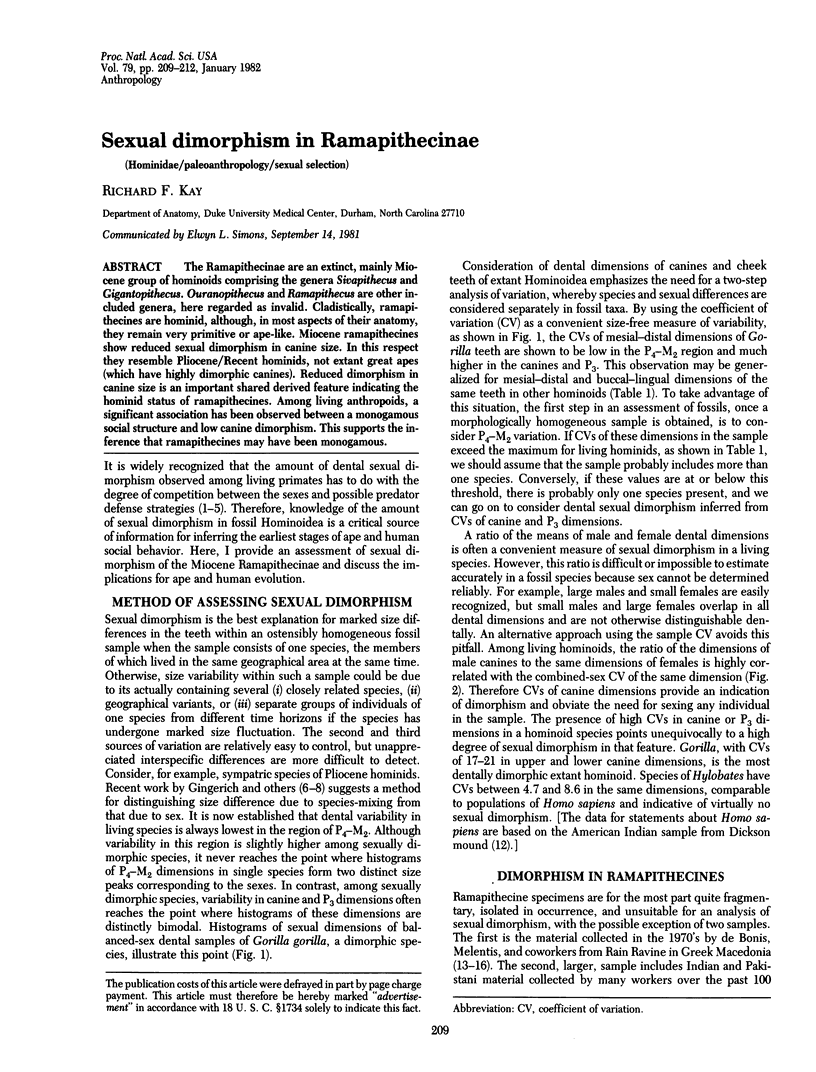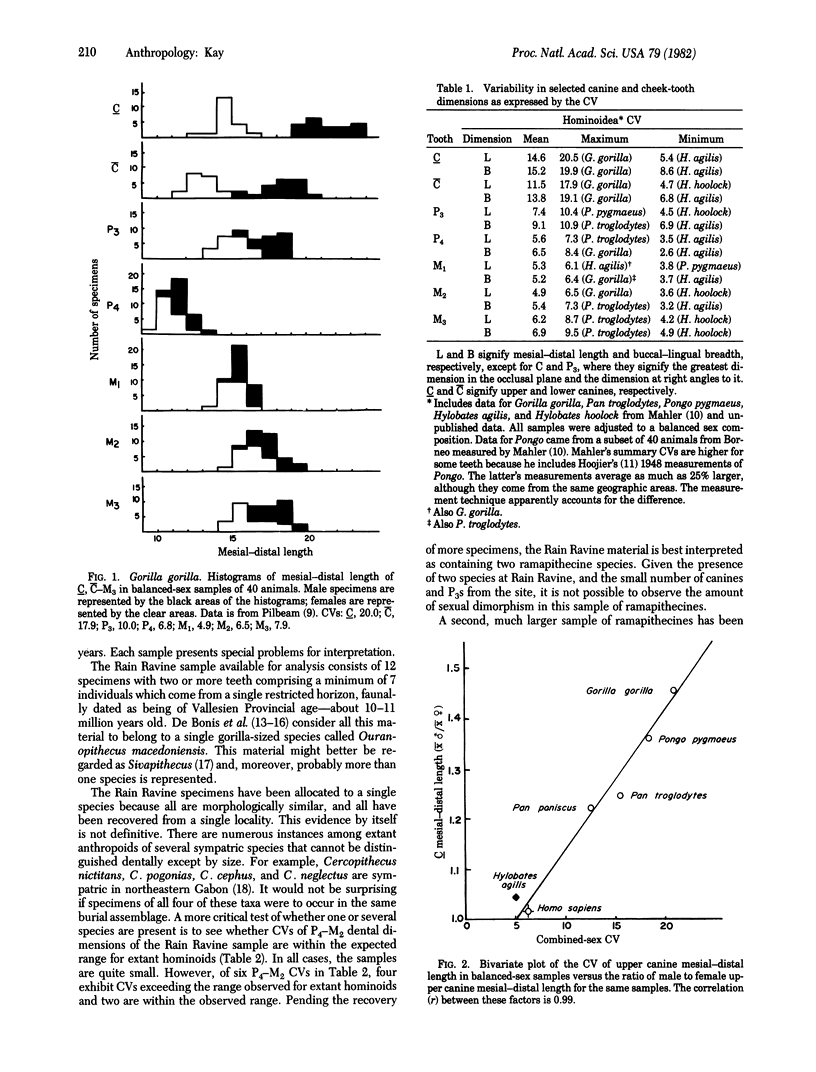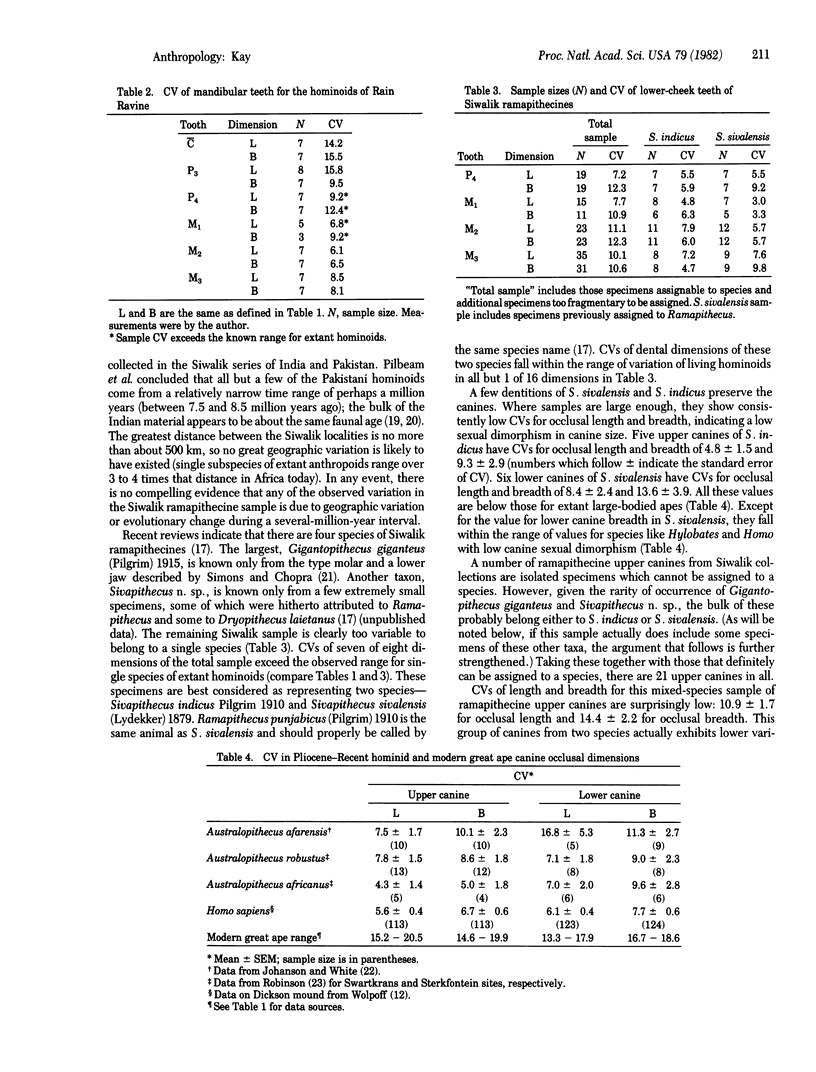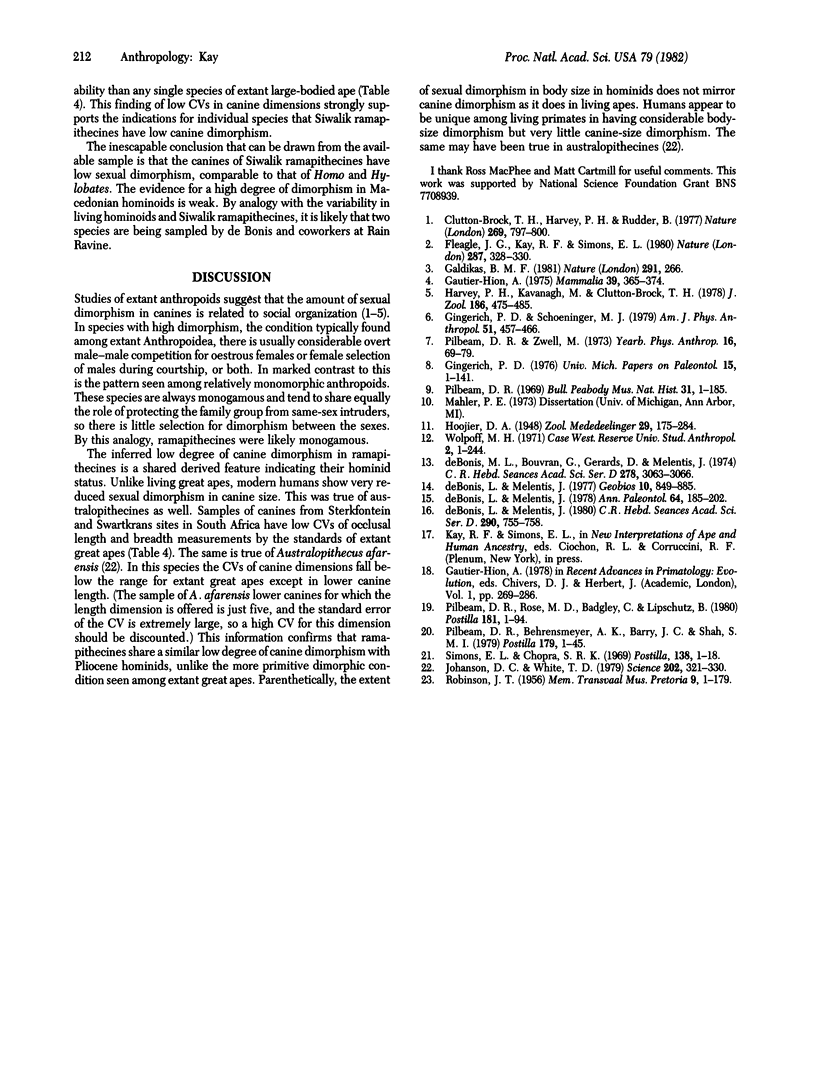Abstract
The Ramapithecinae are an extinct, mainly Miocene group of hominoids comprising the genera Sivapithecus and Gigantopithecus. Ouranopithecus and Ramapithecus are other included genera, here regarded as invalid. Cladistically, ramapithecines are hominid, although, in most aspects of their anatomy, they remain very primitive or ape-like. Miocene ramapithecines show reduced sexual dimorphism in canine size. In this respect they resemble Pliocene/Recent hominids, not extant great apes (which have highly dimorphic canines). Reduced dimorphism in canine size is an important shared derived feature indicating the hominid status of ramapithecines. Among living anthropoids, a significant association has been observed between a monogamous social structure and low canine dimorphism. This supports the inference that ramapithecines may have been monogamous.
Keywords: Hominidae, paleoanthropology, sexual selection
Full text
PDF



Selected References
These references are in PubMed. This may not be the complete list of references from this article.
- Clutton-Brock T. H., Harvey P. H., Rudder B. Sexual dimorphism, socionomic sex ratio and body weight in primates. Nature. 1977 Oct 27;269(5631):797–800. doi: 10.1038/269797a0. [DOI] [PubMed] [Google Scholar]
- Fleagle J. G., Kay R. F., Simons E. L. Sexual dimorphism in early anthropoids. Nature. 1980 Sep 25;287(5780):328–330. doi: 10.1038/287328a0. [DOI] [PubMed] [Google Scholar]
- Gingerich P. D., Schoeninger M. J. Patterns of tooth size variability in the dentition of primates. Am J Phys Anthropol. 1979 Sep;51(3):457–465. doi: 10.1002/ajpa.1330510318. [DOI] [PubMed] [Google Scholar]
- Johanson D. C., White T. D. A systematic assessment of early African hominids. Science. 1979 Jan 26;203(4378):321–330. doi: 10.1126/science.104384. [DOI] [PubMed] [Google Scholar]


